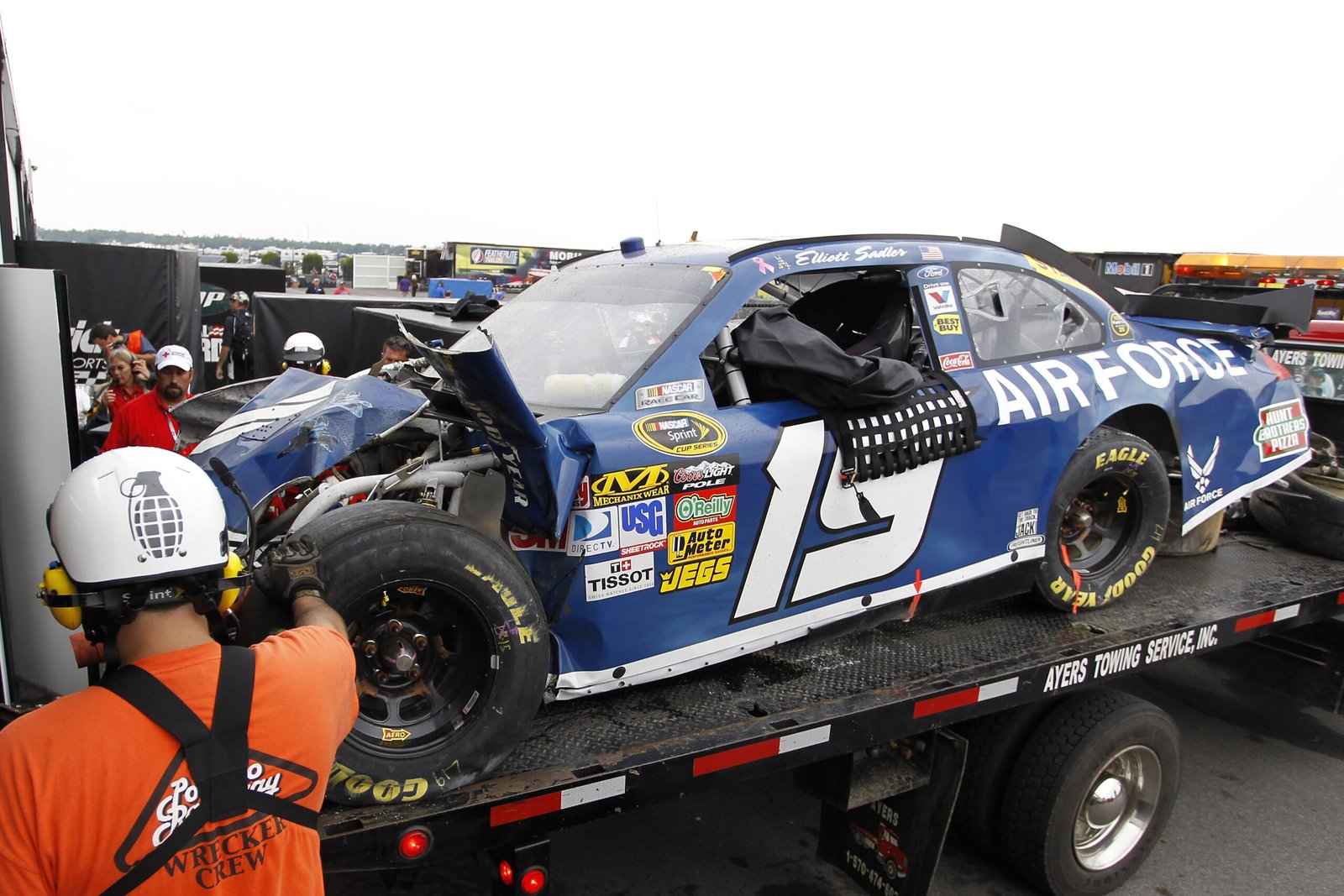Elliott Sadler’s Harrowing Crash at Pocono Raceway – August 1, 2010
On August 1, 2010, during the Sunoco Red Cross Pennsylvania 500 at Pocono Raceway, Elliott Sadler experienced one of the most violent crashes in recent NASCAR history. The incident, which occurred on Lap 165 of the 200-lap race, left fans and drivers alike shaken by its severity.
The Crash
As the field roared into Turn 1 of the “Tricky Triangle,” a multi-car wreck unfolded when Kurt Busch bumped into Jimmie Johnson, causing a chain reaction. In the chaos, Sadler’s No. 19 Richard Petty Motorsports Ford was tagged and sent careening out of control at nearly 170 mph.
Sadler’s car spun across the track, sliding into the infield grass. However, the real danger came when the front of his car slammed directly into an unprotected dirt embankment at full speed. The impact was so severe that the engine was ripped from the car and hurled across the infield. The force of the collision destroyed the front end, leaving Sadler’s car barely recognizable.
Immediate Aftermath
The violent impact triggered immediate concern. Sadler’s car came to rest on its roof before sliding back onto its wheels. Emergency crews rushed to the scene as Sadler gingerly exited the mangled vehicle. Though visibly shaken, he was able to walk to a waiting ambulance.
Speaking about the crash later, Sadler described the moment of impact:
“That was the hardest hit I’ve ever had in my life. I felt like I hit a concrete wall at full speed.”
Medical Evaluation and Recovery
Sadler was taken to the infield care center and subsequently transported to a local hospital for precautionary scans and evaluation. Remarkably, he escaped with no major injuries, though he reported severe bruising and soreness from the high g-forces involved in the crash. NASCAR’s safety innovations, particularly the HANS device and SAFER barriers, were credited with saving his life.
Safety Concerns Raised
The crash highlighted safety deficiencies at Pocono Raceway, particularly the lack of SAFER barriers in some infield areas. The spot where Sadler hit was unprotected by energy-absorbing technology, leading to widespread calls for improvements. By 2011, Pocono Raceway had installed SAFER barriers in several areas, including the embankment where Sadler’s crash occurred.
Legacy of the Incident
Sadler’s Pocono crash is remembered as a turning point in NASCAR’s push for increased safety measures. It underscored the importance of continuous evaluation and improvement of track infrastructure. For Sadler, the incident served as a grim reminder of the dangers of racing, but it also solidified his reputation as one of NASCAR’s toughest competitors.
Despite the severity of the wreck, Sadler returned to racing the following week, demonstrating remarkable resilience and determination.



